Here’s our round-up of some of the hottest spots out there – the new Destiny trailer with VFX Digital Domain, PETA’S CG chimpanzee commercial from The Mill and a Dodge Charger / Defiance tie-in featuring effects by Method Studios.
The Law of the Jungle – Digital Domain
Digital Domain’s virtual production workflow was key to creating the visuals in the trailer, dubbed ‘The Law of the Jungle’ for Activision and Bungie’s upcoming Destiny game. Mostly CG, the trailer does also feature live action elements and was directed by Jon Favreau (Iron man, Iron Man 2).
VFX supes Jay Barton and Richard Morton were behind the DD team.
Reference material of moon and Mars environments from Bungie’s game engine were used, along with CG game assets. According to DD, the studio then “re-rendered the material at significantly higher resolution and re-designed some elements specifically for the spot. Motion-captured actors were shot in Digital Domain’s virtual production studio with a virtual camera, which enabled the creative team to see the CG characters moving around within the environment – shooting CG as if it were live action. Digital Domain artists then went to work creating cinematic lighting, sophisticated cloth simulations and extravagant explosions to give the Mars and Moon environments a more realistic, volumetric feel.”
PETA – 98% Human – The Mill
For PETA’s ‘98% Human’, a spot promoting the awareness of the treatment of great primates, The Mill created a CG chimpanzee with a new muscle and skin system. The BBDO spot was directed by Angus Kneale, with Mill+ handling production and Mill NY the visual effects.
Angus Kneale told fxguide: “We decided not to use traditional motion capture, and so we wanted to find a different way. When using motion capture on location, it can sometimes add an enormous amount of technical weight to the shoot coloring and clouding the performance. On this project capturing subtle emotion was of utmost importance, we didn’t want the chimpanzees performance to feel like that of a motion capture actor we needed to rely on.
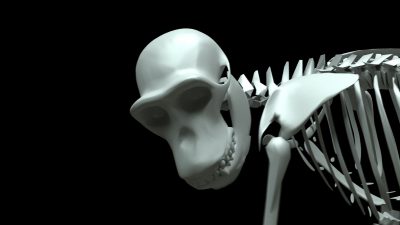
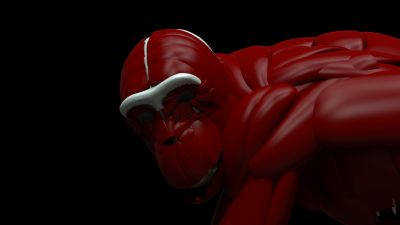
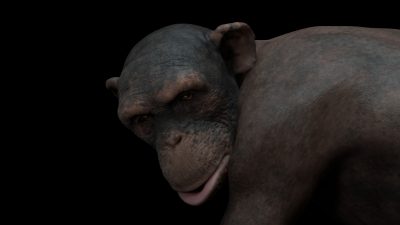
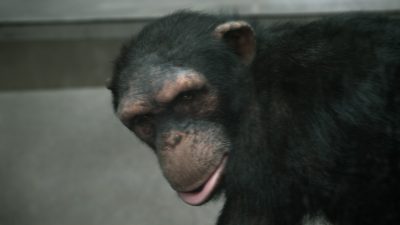
“We decided to set up a traditional shoot and work closely with an actor and use this for lighting, framing, composition and most importantly emotional reference. Our animators then researched documentaries and footage on the Internet on chimpanzee behavior and in turn animated by hand the way a chimp would perform. Using this method we were able to get the subtle nuances that are so unique to chimps’ morphology.
“For the muscle and body animation everything was done in Softimage XSI. In ICE, we developed a unique muscle system for the chimp that we used to simulate the skin and in turn affect the fur. All the tools and techniques were specifically developed for this commercial.
“To start, the animators would use a very low resolution rig to animate the body, and then switch to a high resolution, to fine tune the whole motion, but mainly, the focus was on the facial animation. Then, when the animation was pretty much signed off, we would move onto the simulation pipeline, and export the animation mesh and skeleton geometry of the chimpanzee. A TD would then load the muscle rig, which would automatically stick these muscles onto the bones; it would then run the skin simulation, which gave us the nice sliding and tension of the mesh
on the muscles. We would then shrink-wrap the render mesh from the lighter and would further control the balance animation/simulation from the meshes generated.
“Because of the wrinkled nature of the chimp’s skin, we created sophisticated sets of vector displacement maps and wrote a proprietary shader, which were driven by†automated “tension” maps. So, for example, when the chimp would purse his lips or bend his fingers we would get realistic smoothed or gathered wrinkles.
“Once again using ICE, we incorporated the fur. The fur was a hybrid of XSI’s native hair groom tools and ICE manipulation. After we groomed the chimpanzee, we converted it to individual strands and added compounds to have extra controls and simulation features.†We developed a very complex hair interaction system to get the right stiffness for each hair, making sure any movement and detail on the body would be translated properly.
“Overall, ICE gave us full control of the quality, and the ability to deliver very complex tools within an extremely short turn around. We rendered the final product in Arnold and used a proprietary hair shader that incorporates multiple levels of reflection, translucency, glint and diffusion per strand.”
Dodge Charger ‘Defiance’ – Method Studios
Method Studios worked with Syfy TV show Defiance on a Chrysler Dodge Charger spot, highlight the hero vehicle’s role in the series in various stages of transformation in a future landscape that reflects the Defiance environment. The spot, from agency Wieden+Kennedy and MJZ, was directed by Nicolai Fuglsig.
Method visual effects producer Jason Cohon told fxguide, “We worked with Nicolai during the tech scout to plot out what would be feasible in post and what would need to be captured in camera. There are always two competing goals for us on set: gather data and stay out of the way! Nicolai had an amazing practical effects crew. We coordinated where the practical explosions would and would not be then took as much reference as possible so that we could effectively augment the scenes in post. We also collected set data at each location for integration and tracking purposes so that we had a clear picture of our environment when we received the plates.”
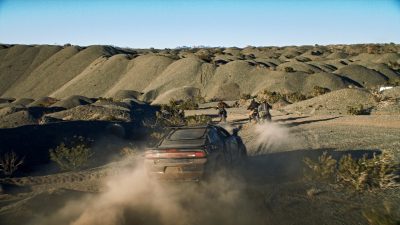
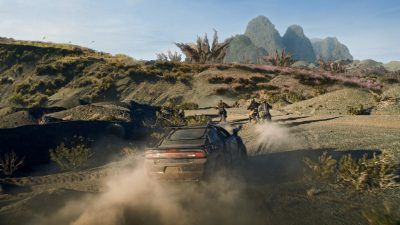
Flame artist Patrick Ferguson notes that the final shots were combinations of live action elements, particle effects, CG assets from the TV show and matte paintings. “We created CG effects for trails of falling debris, smoke clouds, and floating ash in the air. These CG elements were integrated into the shots along with live action elements of explosions, flame bursts, smoke bombs, dust hits, muzzle flashes, and cars on fire. Each sequence had a defined style direction for how the combat and devastation was to be carried out.”
